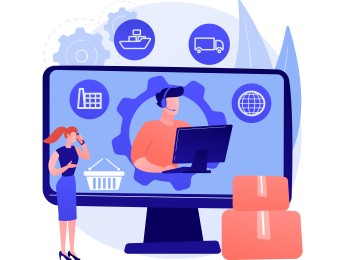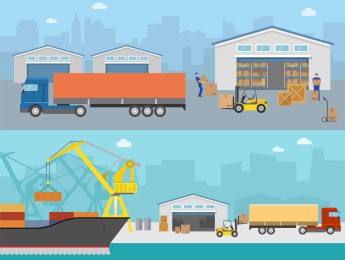Reverse logistics provides opportunities to streamline and reduce costs, increase revenue, and support sustainable practices. This course provides best practices for using reverse logistics strategies to impact your customers and earnings positively.
You will learn about the advantages of reverse logistics and review the key returns elements and how they are managed in a reverse logistics flow. In addition, you will examine multiple strategies used at different points in a supply chain to enhance your company’s reverse logistics applications.
Upon completion of this course, participants will be able to:
- Describe how reverse logistic flows operate.
- Identify the ways that reverse logistics can impact your bottom line.
- Explain the effectiveness of reverse logistics on sustainability.
- Describe strategies to improve the performance of your reverse logistics flow.
This course is intended for:
- Supply Chain Managers, Supervisors, Process Engineers, Sourcing Specialists, and Business Consultants
- Professionals interested in reverse logistics, sustainability, and developing effective supply chains
- Anyone looking to understand reverse logistics strategies
This course utilises a variety of adult learning styles to ensure full understanding and comprehension. Participants will engage with case studies to highlight key areas of importance and identify potential pitfalls. They will be equipped with the best tools to conduct learning exercises, enhancing their practical skills. Through analysing these examples, participants will thoroughly understand how these skills, techniques, and methods can be applied effectively in the workplace. Additionally, interactive workshops and group discussions will allow participants to share insights and collaborate on problem-solving, further reinforcing their learning experience.
Day 5 of each course is reserved for a Q&A session, which may occur off-site. For 10-day courses, this also applies to day 10
Section 1: The Value of Reverse Logistics
- Describe the impacts of reverse logistics on your bottom line.
- Identify how to reverse logistics support corporate sustainability practices.
- Discuss tax implications for donated returns.
- Outline the benefits of employing reverse logistics.
- Develop a case for reverse logistics in an environment of scarce resourcing
Section 2: Overview of the Logistics of Returns
- Understand the causative factors behind returns.
- Review the key activities in a reverse logistics flow.
- Describe the functions and operation of return centres.
- Distinguish between return and distribution centres.
- Discuss the impact of reverse logistics on stakeholders within a value chain.
Section 3: Strategies to Enhance Your Reverse Logistics Flow
- Examine ways to increase recovery rates.
- Review techniques to reduce retail customer returns and manage holiday returns.
- Develop effective return policies.
- Evaluate how repair and refurbishment extend a product’s life cycle.
- Explore the role of manufacturers in reducing product returns.
- Discuss the impact of managing transportation expenses.
- Assess the value of reverse logistics software for your company.
- Identify the benefits and challenges of outsourcing reverse logistics.
- Examine the future of reverse logistics.
Upon successful completion of this training course, delegates will be awarded a Holistique Training Certificate of Completion. For those who attend and complete the online training course, a Holistique Training e-Certificate will be provided.
Holistique Training Certificates are accredited by the British Assessment Council (BAC) and The CPD Certification Service (CPD), and are certified under ISO 9001, ISO 21001, and ISO 29993 standards.
CPD credits for this course are granted by our Certificates and will be reflected on the Holistique Training Certificate of Completion. In accordance with the standards of The CPD Certification Service, one CPD credit is awarded per hour of course attendance. A maximum of 50 CPD credits can be claimed for any single course we currently offer.
- Course Code PO1-114
- Course Format Classroom, Online,
- Duration 5 days














